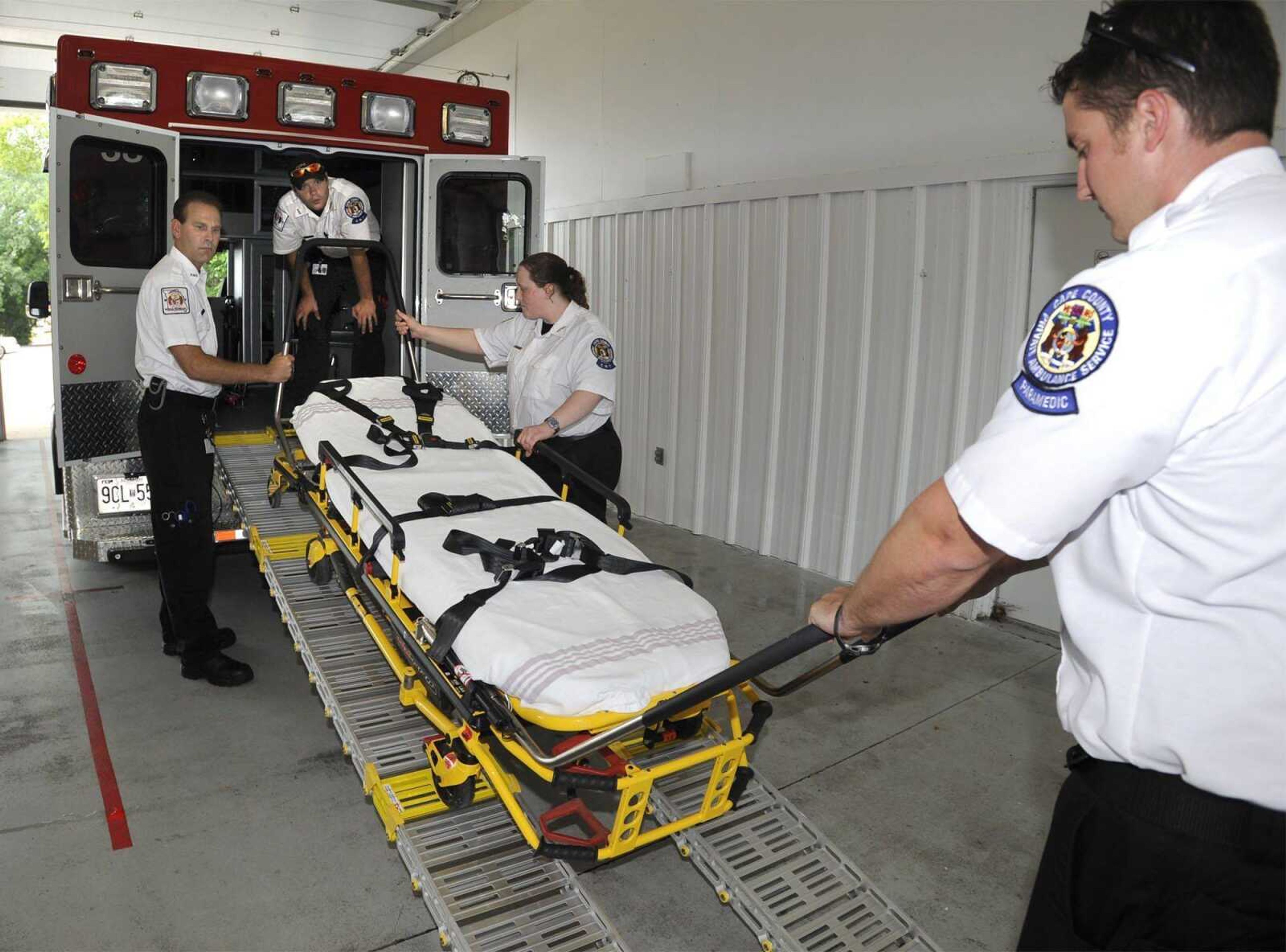Cape County ambulance now has equipment suited for heavier patients
Although Cape County Private Ambulance Service Inc. hasn't seen an influx of patients weighing more than 350 or 400 pounds, the staff now has the capability to make such patients safer and more comfortable if there is an emergency. The bariatric transportation unit, which cost the ambulance $35,000, became available for service calls about a month ago. ...
Although Cape County Private Ambulance Service Inc. hasn't seen an influx of patients weighing more than 350 or 400 pounds, the staff now has the capability to make such patients safer and more comfortable if there is an emergency.
The bariatric transportation unit, which cost the ambulance $35,000, became available for service calls about a month ago. Cape County Private Ambulance decided to buy the unit after emergency medical technicians began to notice an increase in calls involving heavier patients.
Dr. John Russell, Cape County Private Ambulance Service president, said they transport a patient who weighs more than 400 pounds about once a month.
"We know that in the community there's three or four people that are well over 500 pounds now," Russell said. "A big part of what we try to do is make sure that we're doing this as comfortably and as safe as we can."
The newest ambulance has a stretcher that is 12 inches wider than a standard-sized gurney and is rated to hold 1,600 pounds. Standard gurneys hold up to 800 pounds, but Russell said they are often unsafe to use with a patient who weighs more than 350 pounds.
"The ergonomics of lifting and carrying that stretcher and getting it into an ambulance becomes more difficult and less safe for the patient," Russell said.
The bariatric ambulance is also modified to allow for a ramp to be attached to the back. With a winch, EMTs can tow the stretcher up the ramp and into the ambulance with little effort. Still, Russell said, he requires four EMTs to operate the the ramp -- two to stabilize the patient, one in the ambulance and one to work the winch.
Earlier this year, Cape County Ambulance Service was asked to transport a patient from an area hospital to a local nursing home. Because of the person's weight, Russell said, the EMTs felt uncomfortable transporting her without the proper equipment. They had to contract with a service from St. Louis to move the patient.
"I guess if there was any one thing that stimulated the push to pursue this kind of transport unit, that may have been part of it," he said.
"We thought it would be better, knowing that these people are in the community and knowing that folks of that size typically are not healthy. Consequently, the likelihood of them calling for ambulance transportation goes up," Russell said.
Health risks associated with obesity include diabetes, high blood pressure and various other health problems. Heavier people are also prone to arthritis and bone fractures and, if they're inactive, may easily develop pneumonia or a urinary tract infection.
"As strange as it sounds, they are often malnourished because they're not eating the right things," Russell said.
Because proper care for a heavy patient doesn't end with the ambulance ride, area hospitals, such as Saint Francis Medical Center, also use equipment appropriate for those patients.
Within the last three years, the hospital has bought a new radiology table to support patients weighing up to 600 pounds. Their standard table is suitable for patients weighing up to 440 pounds, according to Greg Rushing, assistant manager of radiology at Saint Francis.
The hospital also recently put to use MRI equipment in an outpatient radiology sector and a new CT scanner in the emergency room, both meant for obese patients.
"The majority of all bariatric patients are usually between 250 pounds and 450 pounds. There's a smaller percentage that are higher than 450," Rushing said. "We do have to be able to accommodate those that are a larger girth."
ehevern@semissourian.com
388-3635
1458 N. Kingshighway, Cape Girardeau, MO
211 Saint Francis Drive, Cape Girardeau, MO
Connect with the Southeast Missourian Newsroom:
For corrections to this story or other insights for the editor, click here. To submit a letter to the editor, click here. To learn about the Southeast Missourian’s AI Policy, click here.








